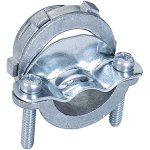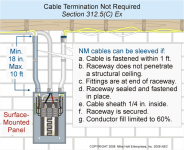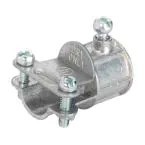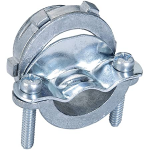LarryFine
Master Electrician Electric Contractor Richmond VA
- Location
- Henrico County, VA
- Occupation
- Electrical Contractor
I got the impression that he was saying that a connector of some sort at the conduit entrance negates the requirement for the sheath to even extend to the enclosure, or like with my example above.I thing Wayne is saying if you use an nm connector in a panel box then you don't have to have 1/4" sheathing in the box.
The transition fitting effectively changes the wiring method from a cable into a wire-in-conduit method.




